An international spotlight shone brilliantly on Habitat for Humanity (HFH) back in August 2005, when Hurricane Katrina hit the eastern side of North America. The storm, which is classified as one of the five deadliest hurricanes in the history of the United States, caused mass destruction and devastation throughout both the U.S. and Canada. Entire cities were destroyed and hundreds of thousands of people faced life without a home or safe shelter.
Then, five years later, in January 2010, a deadly 7.0-magnitude earthquake struck approximately 25 miles west of Port-au-Prince, the capital of Haiti. By the end of that same month, a little over 50 aftershocks had been reported in and around the capital. The death toll rose to 316,000 and the country was absolutely crushed â politically, economically, and industrially.
Volunteers and medical aid were dispatched quickly from all over the world and donations were pouring in from concerned people living thousands of miles away. Sadly, those commendable efforts weren't enough because, months later, the people of both North America and Haiti were still living in squalor, their homes and communities flattened by the force of Mother Nature.
What's required of us is our continued efforts to make sure that New Orleans and the Gulf Coast [the hardest-hit areas of Hurricane Katrina] fully recover, and to make sure that our response to such disasters is the best it can possibly be,
stated U.S. President Barack Obama upon the six-year anniversary of Hurricane Katrina.
Charitable organizations like Habitat for Humanity continue to work around the clock to repair the damage inflicted upon the population by natural disasters, until all people have a safe and decent place to call home again.
We continue to focus our efforts on land tenure reform, training, capacity building, and community rebuilding to help more Haitian families move into safe, permanent homes,
says Antonietta Mirabelli, VP of Marketing and Communications at HFH Canada. Habitat for Humanity's initial goal was to help 50,000 families and, although they have reached that goal, the organization continues to serve Haiti until each family is able to live in relative safety and comfort again. HFH has committed to continue supporting the people of Haiti through to February 2016.
We've broken through gridlock on behalf of tens of thousands of displaced families, making sure they have long-term housing solutions,
And we'll keep at it until these communities come back stronger than before.
Erin O'Neill, director of International Programs at HFH Canada, believes,
"Progress is definitely being made in Haiti despite significant need and challenges facing the country. Our responsibility is to continue mobilizing resources from Canada and ensure Haiti remains top of mind for Canadians long after the earthquake has receded from the media.
A BRIEF HISTORY OF HABITAT FOR HUMANITY
Millard and Linda Fuller founded Habitat for Humanity in 1976 in Americus, Georgia. In its initial stages, HFH recruited volunteers that worked together to provide safe, decent, and affordable housing to needy families in the community. Soon, the organization's mission statement was written:
he mission of Habitat for Humanity International is to mobilize volunteers and community partners in building affordable housing and promoting homeownership as a means to breaking the cycle of poverty.
Since its inception, HFH International has built, rehabilitated, repaired, or improved more than 600,000 houses, providing a safe shelter for over 3 million people worldwide. The fact that HFH is a hand up, not a handout, is clearly emphasized and stressed. All homeowners are expected to aid in the building of not only their new homes, but also the homes of other needy families in their community. This promotes a sense of togetherness and ultimately serves to make the bond between organization and homeowner stronger.
Habitat for Humanity spread North to Canada in 1985, specifically to Winkler, Manitoba, where the first building site was established. Just a couple of years later, the City of Winnipeg became home to the first Canadian HFH affiliate. Habitat for Humanity Canada has grown in size to encompass 65 affiliates in ten provinces and two territories and has provided over 2,500 families with safe housing.
Homes for the needy are built at no profit and no interest is charged on loans.
The families we serve are living below the poverty line but are able to repay an interest-free profit-free mortgage... We provide training and mentoring to families to maximize the success of their transition to homeowners,
explains Antonietta Mirabelli.
The building costs are financed by The Fund for Humanity and through the support of the organization's generous sponsors and affiliates. The Fund's money is collected from homeowners' house payments, no-interest loans that are provided by the organization's supporters, and all fundraising ventures and special events. The fund's mission statement is both striking and inspirational:
What the poor need is not charity but capital, not caseworkers but co-workers. And what the rich need is a wise, honourable, and just way of divesting themselves of their overabundance.
The HFH Board of Directors is the governing body of the organization that determines all policies and monitors all operations. Mary Cameron of Edmonton, Alberta, who serves as the HFH Canada Chair, stands behind the organization's rigid yet fair determining factors when it comes to selection of worthy partner families. Each family's level of need is considered, their willingness to become partners in the program is weighed, and their ability to pay their monthly interest-free mortgage payments is also strongly considered.
BUILDING AND HOMEOWNERSHIP
Habitat for Humanity's key values are "housing for all, human dignity, partnership, faith in action, diversity and inclusiveness." It is clear that HFH believes in making affordable, safe housing available to all needy families who would otherwise not be able to afford a typical builder's home on their own. This is all made possible through volunteer labour and donated materials to build homes for families who have committed to participating in building their new homes.
The cost of a new HFH house depends on three factors:
- the cost of the land,
- labour,
- and, of course, materials.
To help with the cost of materials, HFH is blessed with a list of partners and affiliates that would rival any contractor's wish list. You can find a complete list of partners on the HFH website, but some of the most prominent are The Home Depot, the Canadian Institute of Plumbing & Heating, Enbridge, Royal Bank of Canada, and Whirlpool.
Building costs are kept low by using partners like these as much as possible and through the use of modest, practical home designs for each new house slated for construction. Helpful and willing volunteers contribute most of the required labour for each project and they are joined with the new homeowners who, as part of their agreement with HFH, are required to perform 500 hours of building labour in exchange for a new home and an interest-free mortgage loan. When a homeowner assumes the role of worker, building his or her future home with their own hands, it gives them each an overwhelming sense of accomplishment upon project completion in addition to a strong bond formed between the organization, the homeowner, the volunteers, and the community. Families pitch in together and make up those needed 500 hours in no time, often continuing to work on the project past those required service hours.
Habitat has successfully removed the stigma of charity by substituting it with a sense of partnership. The people who will live in the homes work side by side with the volunteers, so they feel very much that they are on an equal level,
reflects Habitat for Humanity International's most famous volunteer, former U.S. President Jimmy Carter.
Habitat for Humanity's mortgage loans are simple: they accumulate no interest and are easy to pay off. Each family is given a monthly payment plan that is determined based on the family's gross income. By doing this, HFH ensures that not only are the homeowners able to make their monthly mortgage payments, but the family is also able to meet their other day-to-day needs and expenses. Things like groceries, transportation, and childcare cost money, and with a reasonable mortgage payment plan, homeowners can rest easy, knowing that their income can handle multiple monthly expenses.
VOLUNTEERING & HOW YOU CAN HELP
It might sound silly, but the easiest and most efficient way for you to help HFH would be to donate money to the organization through either its website or through one of its head offices located within North America. Individuals also have the option of registering as an official sponsor or by periodically purchasing official HFH merchandise through its online shop. All proceeds from sales of its merchandise go directly to helping build future homes for needy families.
JKT volunteering for Habitat for Humanity
Julie and Stephanie working
If you are unable to donate money or become a sponsor of HFH, you can become an advocate of the organization by bringing relevant issues to the forefront of your community, raising awareness for the cause. Your voice is powerful and can influence your community to become involved in the HFH movement and support it not only financially but also through volunteer labour.
More than 63,000 volunteers work with HFH Canada every year. People can volunteer to work on a board, by offering assistance at one of the HFH offices, and by volunteering to work on building sites, which is what most people choose to do because that is where most of the help is needed.
Many labour volunteers are professional tradespeople who know their way around a building site and who generously donate their time on local sites and international building sites. Volunteers may apply to work abroad through HFH's Global Village program. Trips to places like Kenya, India, Thailand, Romania, El Salvador, and Costa Rica are regularly scheduled throughout the year. In the case of a natural disaster â for instance, in Haiti and the spots hardest hit in North America by Hurricane Katrina â building and salvaging trips are scheduled immediately or based on international need.
Volunteers are encouraged to register and apply online through the HFH website or in person at one of the organization's offices. Individual volunteers are welcome as well as corporate, scholarly, and religious groups.
We've recently volunteered at Habitat for Humanity, here are some photos:
A NEW PROJECT: CANADA BUILDS
Habitat for Humanity Canada launched their nationwide Canada Builds program in Calgary, Alberta, on May 27, 2014, together with Genworth Canada.
Genworth Canada has been a longstanding partner of Habitat and has been essential to the launch of Canada Builds by providing multi-year financial support... Since 2006, we've had the tremendous support of thousands of Canadians who have travelled abroad through Habitat for Humanity Global Village to play an essential role in the completion of Habitat projects internationally, but many communities in Canada could also benefit from this type of support â places that have a limited build season due to short summers, disaster stricken areas, and rural communities that might not have the volunteer base required to complete Habitat projects as quickly as otherwise possible."
The new project's first scheduled missions are to places that include Whitehorse, Prince Edward Island, and Slave Lake, Alberta, which was hit particularly hard by wildfires back in 2011. HFH is kindly asking for volunteers who are aged 16 or older to apply to the Canada Builds program.
IMPACT
It's true what they say: a single Habitat home touches the lives of thousands. The safe and affordable housing that the organization provides for needy families the world over lends communities a sense of strength and camaraderie. It has been proven through statistical studies that a Habitat home improves homeowners' lives in many different ways:
- children have begun to perform well at school,
- adults' employment prospects and opportunities have improved,
- and families have become happier and healthier over time.
Communities also experience substantial benefits from having Habitat homes built within their boundaries. Communities have come to attract sizeable economic investment and further urban development. The strain placed on social services is lessened and regular contributions are made to various community organizations and school systems.
Worldwide attention is given to HFH through its large list of celebrity supporters and volunteers. Internationally recognized stars such as Arnold Schwarzenegger, Katie Couric, Brad Pitt, Calvin Klein, Jennifer Aniston, and Kanye West alongside popular musical acts like U2, Beastie Boys, and Canada's own Barenaked Ladies lend their support and, quite often, their physical labour to various HFH causes throughout the world. They are certainly not afraid to get their hands dirty and pitch in with the rest of the HFH volunteers when it comes to helping such a worthy and needed cause.
These high profile ambassadors will help draw greater attention to Habitat and our vision of a world where everyone has a decent place to live,
says Rick Hathaway, HFH vice-president for Asia-Pacific.
In addition to the organization's Global Village International Volunteer Program, HFH also promotes its Aboriginal Housing Program and its Women Build Program through its website, its missives, and its fundraising events. It seems that nothing and no one is overlooked when it comes to aiding those in need and in times of crisis.
Antonia Cuffee grew up in a HFH home in Easton, Maryland. Her mother had applied for HFH housing to break to the unending cycle of moving her and her children from house-to-house. When the family's application was approved, the Cuffee family was living in an apartment located directly above a drug dealer's home.
My mother was a single mother who was very poor, but she saw the value of homeownership and was willing to work hard for it.
says Cuffee. The family was required to complete 1,500 hours of volunteer labour hours, helping to build not only their new home, but other needy families' homes too.
"I used the values I learned from building our home as tools to reach dreams that no one in my family would have fathomed,"
says Cuffee.
Cuffee has since graduated from the University of Maryland School of Law and was sworn into the Maryland Bar in late 2011. She is the first lawyer in her family.
"Everyone is an agent of change. There is great power in knowing that families are working with us, as partners, to lift themselves out of poverty,"
says Erin O'Neill.
You may now be wondering how an HFH project gets started. Individuals are kindly asked to contact the HFH National office for information on nominating a needy family or requesting help in their community. If you'd like more information regarding the organization, its policies, and its services, please check the official website or send a quick email to
Habitat's long-term vision is about much more than construction. It's about empowering and supporting change for the benefit of an entire community. While we measure our progress by the number of families and individuals served, the impact of our urban development and land tenure work can be seen in the transformation of not only lives, but also whole communities.
explains O'Neill.
VB00SK


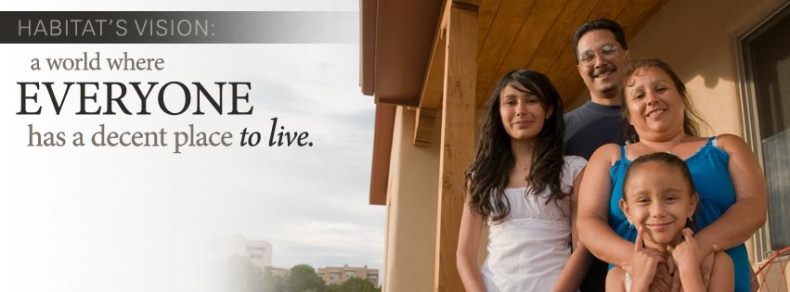
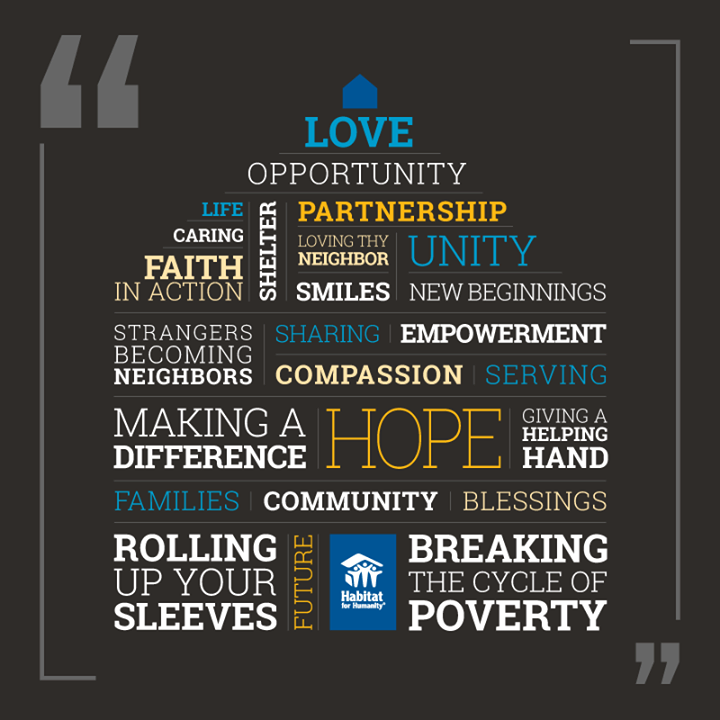
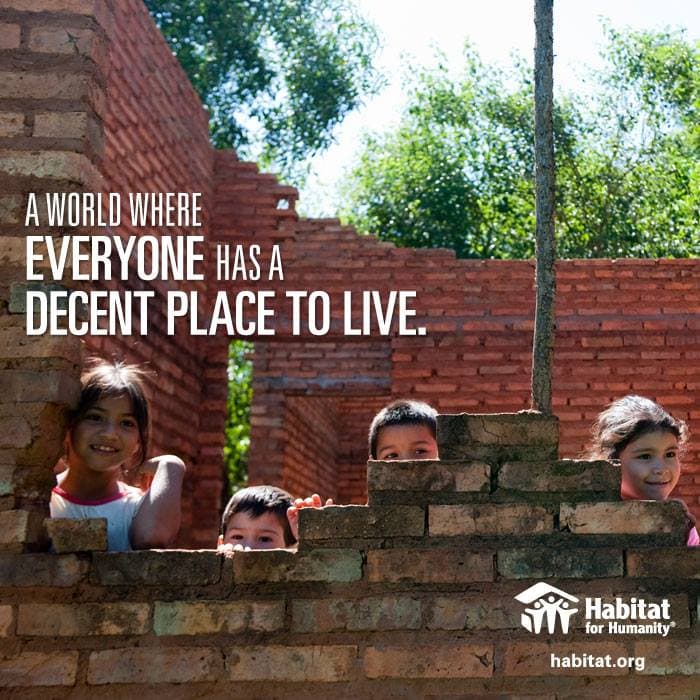
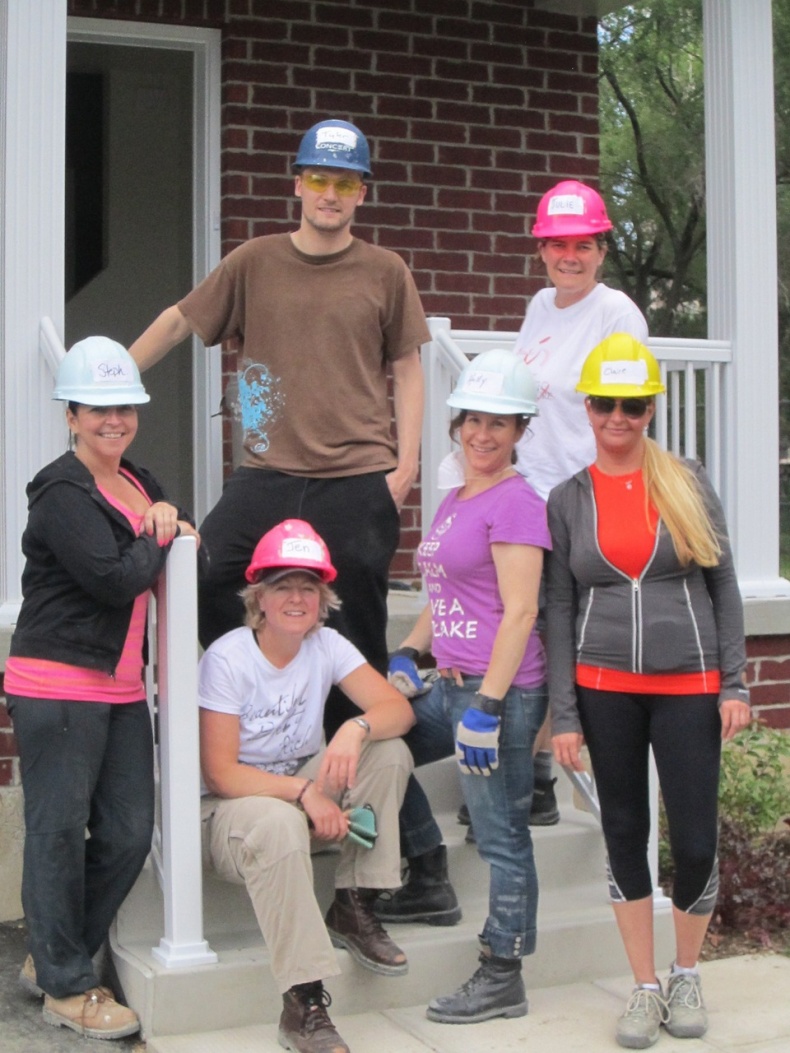

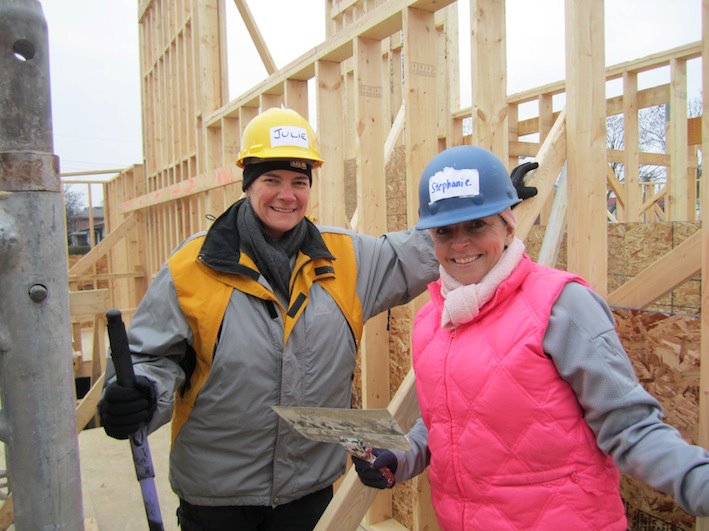

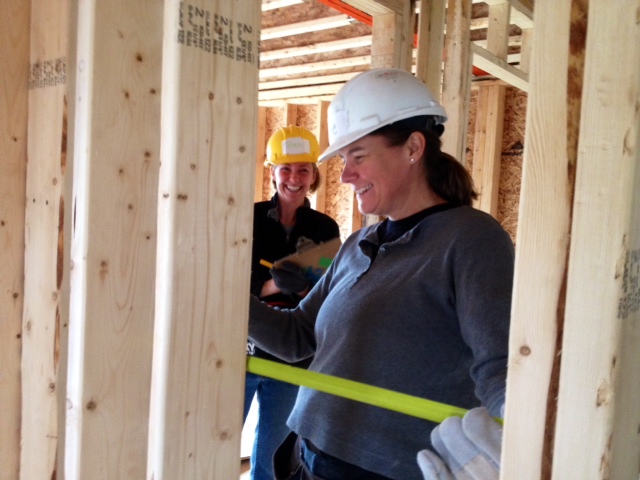
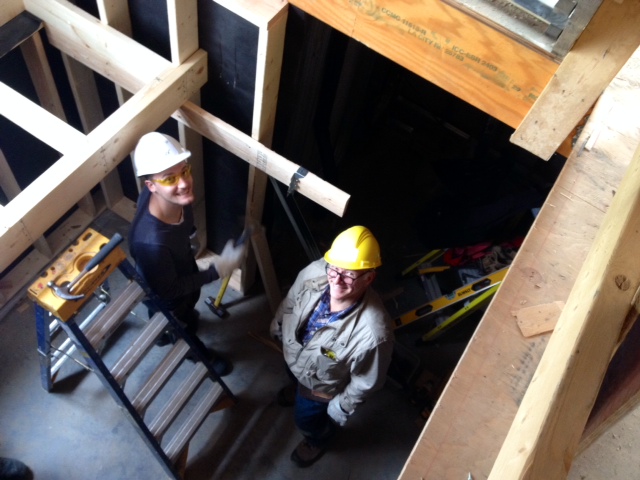

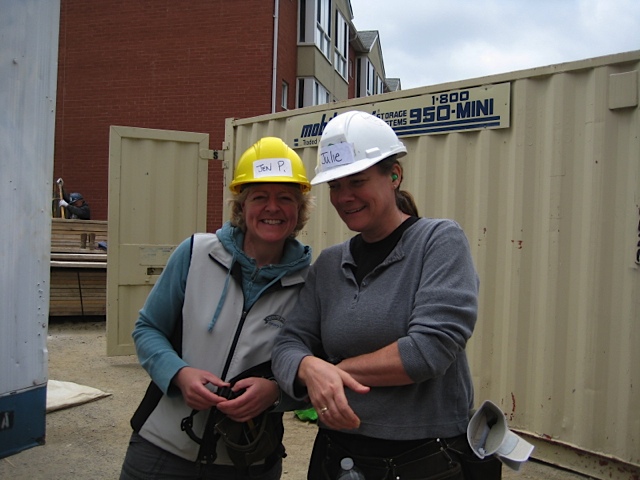
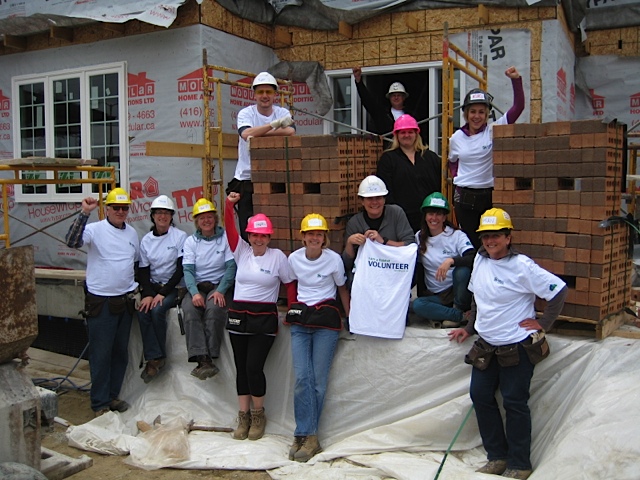
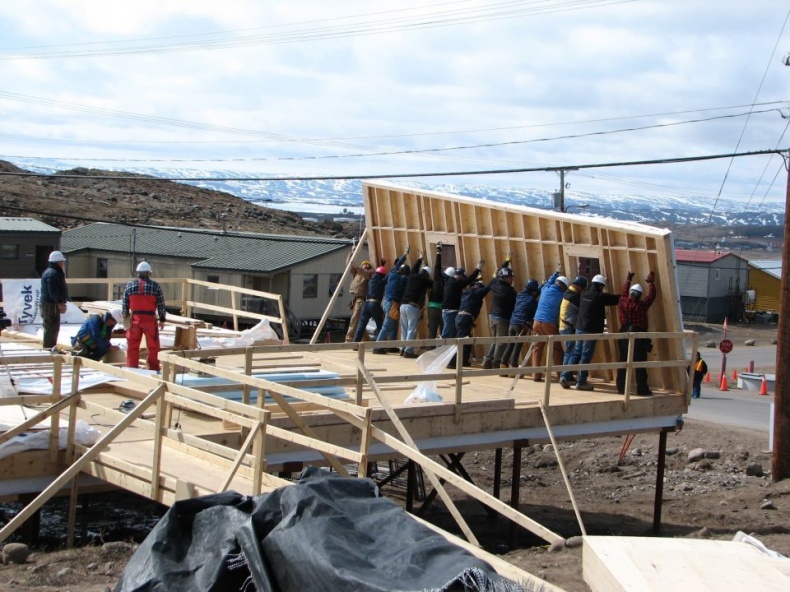
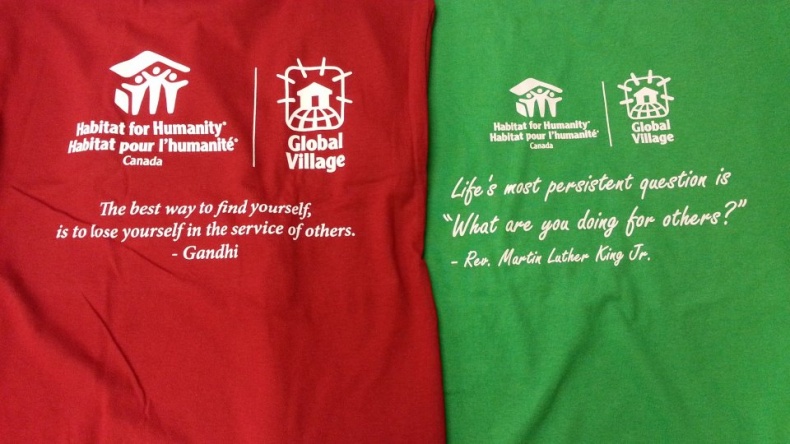
I am a volunteer at my local Habitat for Humanity. I would like your permission to use the graphic in this article on a wall in our office.